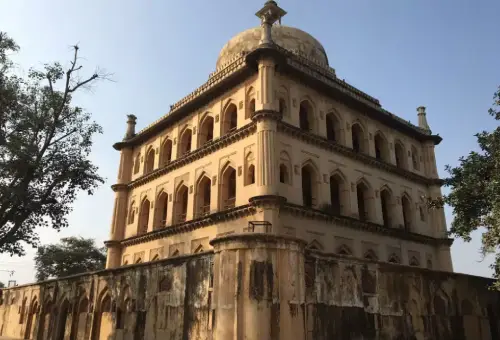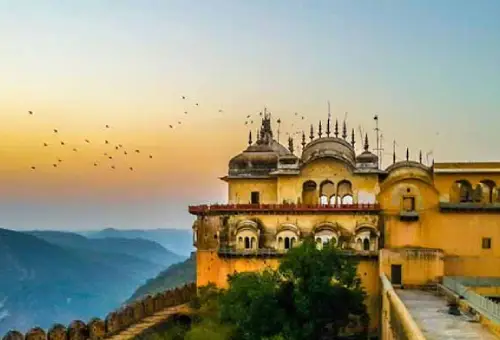Alwar Tours
Alwar is a where the journey of the Fairy Queen ends! The oldest working engine in the world and one of India’s national treasure, Fairy Queen leads a train from Delhi encampment to Alwar in Rajasthan. The engine was built in 1855 and acquired by the Eastern Indian Railways from a British firm. The train that harnesses this engine is now used for tourism.The journey of the city of Alwar and its origins can be traced back to 1500 BC. Nestled in the lap of the green hills of the Aravalli range, it is home to beautiful palaces and forts from an era long gone.

FATEH GUNG GUMBAD
This spectacular tomb, which is a combination of domes and minarets is an artistic marvel. Constructed from high quality sandstone, its massive dome can be seen from afar and is a blend of Hindu and Muslim architecture.

ALWAR CITY PALACE
Built in 1793 AD by Raja Bakhtawar Singh, the City Palace is an amazing mélange of the Rajputana and Islamic styles of architecture. The highlight of this palace are graceful marble pavilions set on lotus flower bases in the central courtyard.

NEEMRANA FORT
History says that Neemrana Fort was built by the Yaduvanshis, believed to be the descendants of Lord Krishna. Its story is rife with conquests and defeats and it has passed from the Rajputs to the Mughals and the Jats, before finally coming back.

MOOSI MAHARANI
This cenotaph, built in the memory of Maharaja Bakhtawar Singh and his queen, Rani Moosi, reflects the Indo-Islamic style of architecture. The upper portion comprising columned pavilions and domed arches is made of marble while the lower section.

BALA QILA
The Bala Qila (young fort) was built on the foundations of a 10th century mud fort and is a towering structure set atop a hill. Strong fortifications, graceful marble columns and delicate latticed balconies make up the fort.Bala Qila.

PANDU POL
A trail through the Sariska Sanctuary gate leads to this temple dedicated to Lord Hanuman. At the Pandu Pol or Pandu gate, gushes a spring that appears to magically cascade down from the hard and compact rocks. Legend has it that the Pandava.
